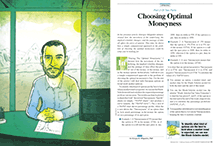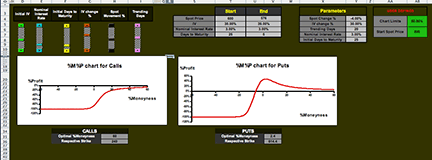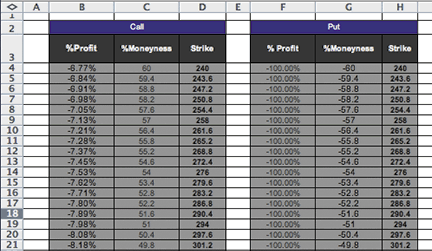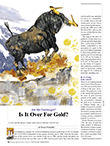 Editor,
Editor,I have received many emails from Stocks & Commodities readers who trade options, asking me about the possibility of providing the Excel spreadsheet mentioned in my February 2012 article in Stocks & Commodities, “Choosing Optimal Moneyness.”
LETTERS TO THE EDITOR
The editors of S&C invite readers to submit their opinions and information on subjects relating to technical analysis and this magazine. This column is our means of communication with our readers. Is there something you would like to know more (or less) about? Tell us about it. Without a source of new ideas and subjects coming from our readers, this magazine would not exist.
Address your correspondence to: Editor, Stocks & Commodities, 4757 California Ave. SW, Seattle, WA 98116-4499, or E-mail to editor@traders.com. All letters become the property of Technical Analysis, Inc. Letter-writers must include their full name and address for verification. Letters may be edited for length or clarity. The opinions expressed in this column do not necessarily represent those of the magazine. —Editor
 Editor,
Editor,
I have received many emails from Stocks & Commodities readers who trade options, asking me about the possibility of providing the Excel spreadsheet mentioned in my February 2012 article in Stocks & Commodities, “Choosing Optimal Moneyness.”
In response, I’ve created a similar spreadsheet and would like to make it available to all S&C subscribers.
Giorgos Siligardos
We have made this Excel spreadsheet available for download here, from the Subscribers’ Area of our website. From our homepage at Traders.com, scroll down to the section labeled “Article Code” and click “Enter now.” Look for the file from Giorgos Siligardos associated with the article “Choosing Optimal Moneyness.” Screen captures from the spreadsheet are shown in Figures 1 and 2.—Editor

FIGURE 1: OPTIMAL MONEYNESS SPREADSHEET. This shows a sheet from Giorgos Siligardos’ Excel spreadsheet on options to accompany his February 2012 S&C article, “Choosing Optimal Moneyness.” The spreadsheet is available to subscribers in the Subscribers’ Area of traders.com.

FIGURE 2: OPTIMAL MONEYNESS SPREADSHEET. This sheet lists “percentage moneyness” and strike prices for puts & calls.
 Editor,
In your May 2012 issue in the Letters To S&C column, you published a letter from John McGinley regarding my article from the 2012 Bonus Issue of Stocks & Commodities, “Don’t Ditch The Dogs Of The Dow.” I would like to respond.
Editor,
In your May 2012 issue in the Letters To S&C column, you published a letter from John McGinley regarding my article from the 2012 Bonus Issue of Stocks & Commodities, “Don’t Ditch The Dogs Of The Dow.” I would like to respond.
First, I’d like to thank him for his comments. It makes my work worthwhile to know that people are reading!
When I calculated the results of the Dogs strategy with my suggested modification, what bothered me was not so much the losses of 2000, 2001, 2002, and 2005, which ranged from -1.16% to -11.97%, which I felt was acceptable in the realm of investment losses. Further, the five losing years over the 12-year period (2000–2011) was not of concern either. In fact, seven profitable years out of 12 is not bad.
But what was bothersome was the huge loss in 2008: -24.11%. In addition, the system took us underwater by 6.7%, and after nine years of following the system! And here, I couldn’t agree with you more; who would stay with such a system? At this point in the article, I had wondered if it was worth sharing. But after reflecting on the gold market, which I have been following for years, I realized that the FVOI indicator for gold (“Does Gold Still Have Room to Run?”, Stocks & Commodities, February 2011) did nothing for investors for 20 years, from 1981 to 2000, except realize paltry gains and acceptable losses. Again, who would stay with such a system?
Those who stayed with the FVOI indicator were rewarded with an explosion in the price per ounce of gold from $323 in February 2000 to nearly $1,700 today, a fivefold increase. Those who abandoned the modified Dogs system in 2008 would have missed out on the explosion in 2009, 2010, and 2011, which not only made up for the previous years’ losses, but ended with a 66.4% profit over the 12-year period.
The heart of my investment philosophy is not only to invest according to tested systems, but to diversify among systems as well. After all, no system works 100% of the time. It would be foolish to put all of one’s funds in just one system or fund or stock. With this in mind, I decided the Dogs modification was worth sharing with investors who may wish to add another tested system to their arsenal for disciplined investing.
Teresa Fernandez